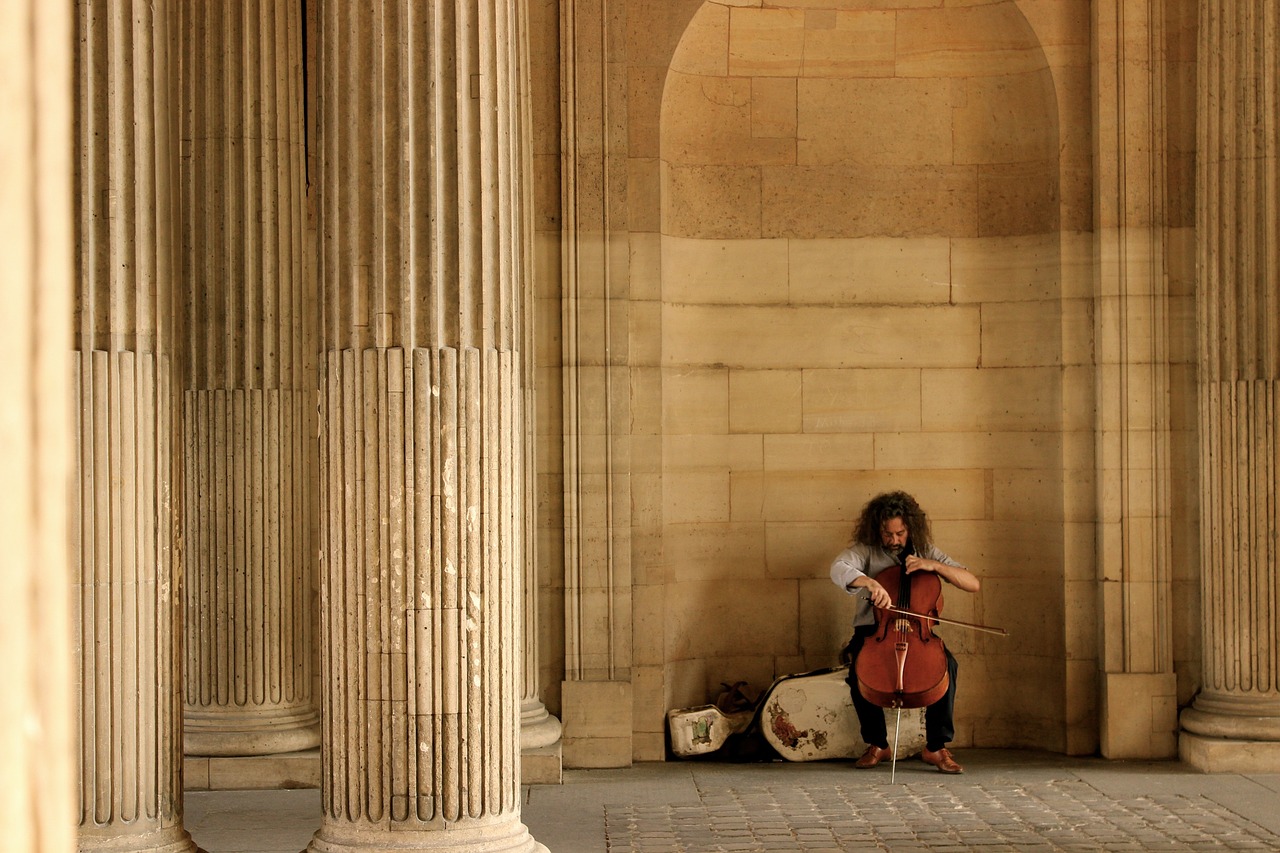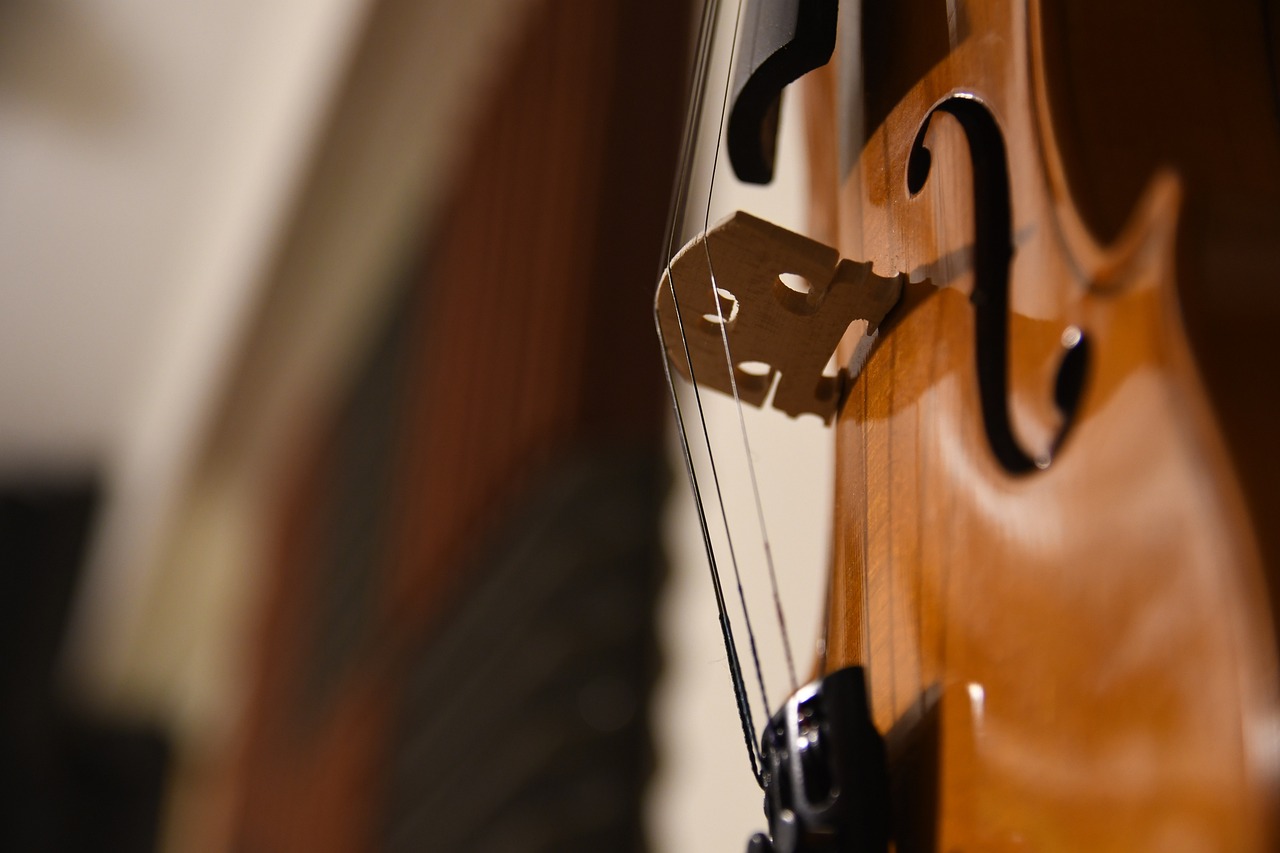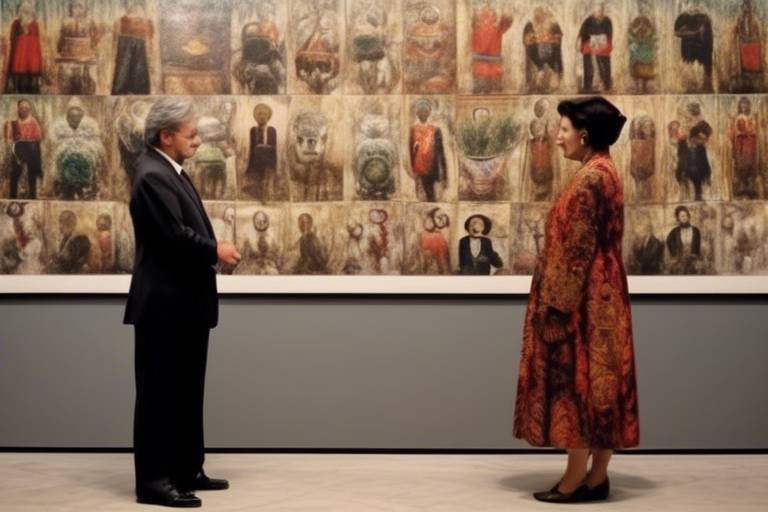The Aesthetics of Traditional Music in World Cultures
Traditional music serves as a captivating window into the soul of diverse global cultures, offering a rich tapestry of sounds, rhythms, and stories that have been passed down through generations. From the haunting melodies of Asian traditions to the pulsating beats of African rhythms, each musical expression carries with it a unique essence that reflects the heritage and values of its people.
Defined by its deep cultural roots and historical significance, traditional music plays a vital role in preserving the identity and heritage of communities around the world. Through the use of traditional instruments, vocal techniques, and storytelling elements, this music serves as a powerful medium for transmitting cultural knowledge and values from one generation to the next.
As we journey across the globe, we encounter a kaleidoscope of traditional music styles that vary in tone, rhythm, and instrumentation. From the intricate melodies of Asian traditions, characterized by instruments like the sitar, shamisen, and gamelan, to the vibrant African rhythms that weave together drums, vocals, and dance, each region offers a unique musical landscape that reflects its cultural diversity.
Asian traditional music is a mesmerizing tapestry of sounds that blends intricate melodies with rhythmic complexity. Instruments like the sitar in India, the shamisen in Japan, and the gamelan in Indonesia create a sonic palette that transports listeners to ancient realms of beauty and contemplation.
The heartbeat of Africa resonates through its traditional music, where pulsating rhythms and soulful vocals come together to create a powerful storytelling experience. Through the use of drums, chants, and dance, African music embodies the spirit of community and celebration, inviting listeners to join in the rhythmic journey.
The echoes of traditional music reverberate through the corridors of modern musical genres, shaping and influencing contemporary sounds in profound ways. From folk ballads to pop anthems, traditional music has left an indelible mark on the global music landscape, inspiring artists and audiences alike.
Preserving traditional music is not just about safeguarding the past; it is about ensuring the continuity of cultural heritage for future generations. By valuing and promoting traditional music, communities can foster a sense of pride and connection to their roots, fostering a sense of belonging and identity.
Globalization has brought both challenges and opportunities to the world of traditional music, opening doors for cultural exchange and collaboration while also posing threats to the authenticity and integrity of musical traditions. As traditional music adapts to the changing currents of a globalized world, it faces the dual task of staying true to its roots while embracing new possibilities for innovation and creativity.
In response to the pressures of globalization, there has been a resurgence of interest in traditional music through revival movements and cultural initiatives aimed at revitalizing and celebrating musical heritage. These movements seek to reignite passion for traditional music, ensuring that its beauty and significance continue to resonate with audiences around the world.

Defining Traditional Music
Traditional music is a cultural treasure trove that reflects the essence and identity of a community or a region. It encompasses a wide array of musical styles, instruments, and vocal techniques that have been passed down through generations. The essence of traditional music lies in its deep-rooted connection to the heritage and history of a particular culture, serving as a bridge between the past and the present.
When defining traditional music, it is essential to consider the cultural roots from which it stems. These roots often trace back centuries, with each note and rhythm carrying the stories and emotions of the people who created and preserved these musical traditions. Traditional music plays a vital role in preserving the cultural heritage of a community, acting as a living archive of customs, beliefs, and values.
Moreover, traditional music serves as a means of cultural expression and communication, transcending language barriers to convey emotions and narratives. The melodies and lyrics of traditional songs often reflect the daily lives, struggles, and triumphs of the people, offering a glimpse into their worldview and experiences.
Through traditional music, communities celebrate their identity and uniqueness, fostering a sense of belonging and unity among its members. The traditional instruments used in music production, such as drums, flutes, and stringed instruments, carry symbolic meanings and cultural significance, adding layers of depth and richness to the musical compositions.

Regional Variations
Exploring the beauty and significance of traditional music in various global cultures, highlighting the unique characteristics and influences that shape these musical expressions.
Examining the definition and essence of traditional music, including its cultural roots, historical significance, and role in preserving heritage.
When it comes to traditional music, the regional variations offer a fascinating glimpse into the diverse musical tapestry of the world. Each region boasts its own unique styles, instruments, and rhythms, reflecting the cultural nuances and historical influences that shape the musical traditions. From the intricate melodies of Asian music to the vibrant beats of African rhythms, traditional music showcases the richness and diversity of global musical expressions.
Asian traditional music is known for its intricate melodies and complex rhythms that captivate listeners with their beauty and depth. Instruments like the sitar from India, shamisen from Japan, and gamelan from Indonesia create a rich tapestry of sounds that transport audiences to different realms. The fusion of tradition and innovation in Asian music showcases a harmonious blend of ancient musical practices with modern influences, creating a unique musical experience.
African traditional music is characterized by its vibrant beats, expressive storytelling elements, and communal spirit. The use of drums, vocals, and dance in African music reflects the cultural values of community, connection, and celebration. Through rhythmic patterns and energetic performances, traditional African music embodies the essence of cultural identity and heritage, inviting listeners to immerse themselves in the rhythmic pulse of the continent.
Investigating how traditional music from various cultures has influenced and shaped contemporary music genres, from folk to pop and beyond.
Discussing the importance of preserving traditional music as a means of safeguarding cultural heritage and promoting intergenerational transmission of musical traditions.
Analyzing how globalization has affected traditional music practices, including the challenges and opportunities presented by cultural exchange and fusion.
Exploring the resurgence of interest in traditional music through revival movements and cultural initiatives aimed at revitalizing and celebrating musical heritage.

Asian Traditions
Asian traditional music is a rich tapestry woven with intricate melodies and rhythms that reflect the diverse cultures and histories of the continent. From the mesmerizing sounds of the sitar in India to the haunting notes of the shamisen in Japan and the mesmerizing gamelan orchestras of Indonesia, Asian music traditions are as varied as the landscapes they hail from.
One of the defining features of Asian traditional music is the deep connection to nature and spirituality, with many compositions inspired by natural elements such as water, wind, and mountains. These musical pieces often serve as a form of storytelling, conveying ancient myths, legends, and cultural narratives through sound.
Moreover, the use of traditional instruments like the Chinese guzheng, Korean gayageum, and Indian tabla adds a unique flavor to Asian music, creating a sensory experience that transports listeners to different realms and evokes a sense of timelessness.
Throughout history, Asian traditional music has played a vital role in ceremonies, rituals, and celebrations, serving as a means of connecting communities, honoring ancestors, and expressing collective identity. The rhythmic patterns and tonal structures of Asian music reflect centuries of cultural evolution and artistic innovation, making it a treasure trove of musical heritage.

African Rhythms
When delving into the captivating world of , one cannot help but be mesmerized by the pulsating beats and rich storytelling elements that define traditional African music. This musical genre transcends mere entertainment, serving as a powerful medium through which stories, histories, and emotions are conveyed.
The heartbeat of African music lies in the rhythmic patterns created by a diverse array of percussion instruments, such as djembes, talking drums, and kalimbas. These instruments come together in a symphony of sound, weaving intricate melodies that speak to the soul and move the body in ways that are both primal and profound.
Moreover, the vocals in traditional African music are not merely sung; they are storytellers in their own right, narrating tales of love, loss, triumph, and celebration. The harmonies and call-and-response patterns in African music create a sense of community and unity, inviting listeners to participate in the musical journey.
Dance is another integral component of African music, with movements that are as vibrant and expressive as the music itself. The rhythmic patterns of the drums guide the dancers, infusing each step with energy and meaning. In African culture, music and dance are inseparable, forming a holistic expression of identity and heritage.
Through the exploration of , one gains a deeper appreciation for the cultural richness and diversity of the African continent. The music serves as a gateway to understanding the traditions, beliefs, and values of different African communities, offering a glimpse into the soul of a continent steeped in history and resilience.

Influences on Modern Music
The evolution of modern music has been significantly influenced by traditional music from various cultures across the globe. These traditional musical styles have served as a wellspring of inspiration for contemporary musicians, shaping the sound and direction of modern music genres.
By drawing upon the rich tapestry of traditional music, modern musicians infuse their compositions with unique elements that add depth and authenticity to their work. Whether it's the incorporation of traditional instruments, rhythmic patterns, or melodic structures, the influence of traditional music is unmistakable in modern musical creations.
Furthermore, the fusion of traditional music with contemporary styles has led to the emergence of new and innovative genres that blur the lines between past and present. This cross-pollination of musical traditions not only enriches the musical landscape but also fosters cultural exchange and understanding among diverse communities.
Through collaborations between traditional and modern musicians, boundaries are transcended, and new sonic possibilities are explored. These collaborations often result in groundbreaking musical experiences that resonate with audiences worldwide, showcasing the transformative power of cultural exchange through music.
In essence, traditional music acts as a bridge between the past and the present, connecting generations and preserving the essence of cultural heritage through the ever-evolving medium of modern music. The influences of traditional music on modern musical expressions serve as a testament to the enduring legacy of musical traditions and the boundless creativity of human artistic endeavors.

Cultural Preservation
When it comes to , traditional music plays a vital role in safeguarding the rich heritage and history of diverse societies. Through the melodies, rhythms, and lyrics of traditional songs, generations pass down stories, values, and traditions, ensuring that the essence of a culture remains alive and vibrant. Traditional music serves as a bridge between the past and the present, connecting individuals to their roots and fostering a sense of identity and belonging.
Moreover, traditional music acts as a repository of cultural knowledge, encapsulating the collective wisdom and experiences of a community. By preserving and promoting traditional musical practices, societies can maintain a sense of continuity and cohesion, fostering a deeper appreciation for their cultural legacy. This preservation effort extends beyond mere entertainment, serving as a means of honoring the ancestors and preserving the intangible cultural heritage that defines a people.
In many cultures, traditional music is intertwined with rituals, ceremonies, and celebrations, serving as a cornerstone of communal gatherings and social cohesion. The songs and dances passed down through generations hold deep symbolic meaning, reflecting the values, beliefs, and aspirations of a society. Through the preservation of traditional music, communities can ensure that their cultural identity is not lost amidst the rapid changes brought about by modernization and globalization.

Impact of Globalization
Exploring the beauty and significance of traditional music in various global cultures, highlighting the unique characteristics and influences that shape these musical expressions.
Examining the definition and essence of traditional music, including its cultural roots, historical significance, and role in preserving heritage.
Comparing and contrasting traditional music styles from different regions around the world, showcasing the diversity and richness of musical traditions.
Exploring the intricate melodies and rhythms of traditional music from Asia, including instruments like the sitar, shamisen, and gamelan.
Diving into the vibrant beats and storytelling elements of traditional African music, highlighting the use of drums, vocals, and dance in musical expression.
Investigating how traditional music from various cultures has influenced and shaped contemporary music genres, from folk to pop and beyond.
Discussing the importance of preserving traditional music as a means of safeguarding cultural heritage and promoting intergenerational transmission of musical traditions.
Analyzing how globalization has affected traditional music practices, including the challenges and opportunities presented by cultural exchange and fusion. Globalization has brought both excitement and challenges to traditional music around the world. As cultures interact and boundaries blur, traditional music faces a new landscape of possibilities and risks. The fusion of different musical styles and influences has led to the creation of unique hybrid genres, enriching the global music scene. However, this blending of traditions also raises concerns about the preservation of authentic cultural expressions and the potential loss of traditional musical heritage. The impact of globalization on traditional music is a complex tapestry of innovation and preservation, requiring careful navigation to ensure the continued vitality of these rich musical traditions.
Exploring the resurgence of interest in traditional music through revival movements and cultural initiatives aimed at revitalizing and celebrating musical heritage.

Revival Movements
Revival movements in traditional music are like breathing new life into ancient melodies, resurrecting forgotten rhythms, and rejuvenating cultural legacies. These movements serve as a bridge between the past and the present, allowing communities to reconnect with their musical roots and revive the essence of their heritage. Through dedicated efforts and passionate initiatives, enthusiasts and musicians come together to preserve and promote traditional music, ensuring that it continues to resonate with future generations.
Revival movements often involve a resurgence of interest in traditional instruments, vocal styles, and performance techniques that may have faded into obscurity over time. By organizing festivals, workshops, and educational programs, these movements create opportunities for people to engage with and appreciate the beauty of traditional music. They play a crucial role in fostering cultural pride, fostering a sense of belonging, and fostering a deeper understanding of the historical and social contexts in which traditional music originated.
Moreover, revival movements are not just about looking to the past; they also aim to innovate and adapt traditional music to contemporary tastes and preferences. This fusion of old and new elements breathes fresh energy into traditional music, making it relevant and appealing to modern audiences. By embracing innovation while respecting tradition, revival movements ensure that traditional music remains a dynamic and evolving art form that can captivate and inspire listeners across generations.
Frequently Asked Questions
- What is traditional music?
Traditional music refers to the musical styles and compositions that have been passed down through generations within a particular culture or community. It often reflects the historical, social, and cultural aspects of a society, serving as a means of preserving heritage and storytelling.
- How does traditional music differ across regions?
Traditional music varies significantly from one region to another due to diverse cultural influences, historical backgrounds, and available musical instruments. Each region has its unique rhythms, melodies, and storytelling techniques that contribute to the rich tapestry of global musical traditions.
- What role does traditional music play in modern music?
Traditional music serves as a foundational element for many modern music genres, influencing the development of folk, jazz, blues, and even contemporary pop music. Elements of traditional music can be heard in various compositions, showcasing the enduring impact of cultural heritage on musical expression.



















